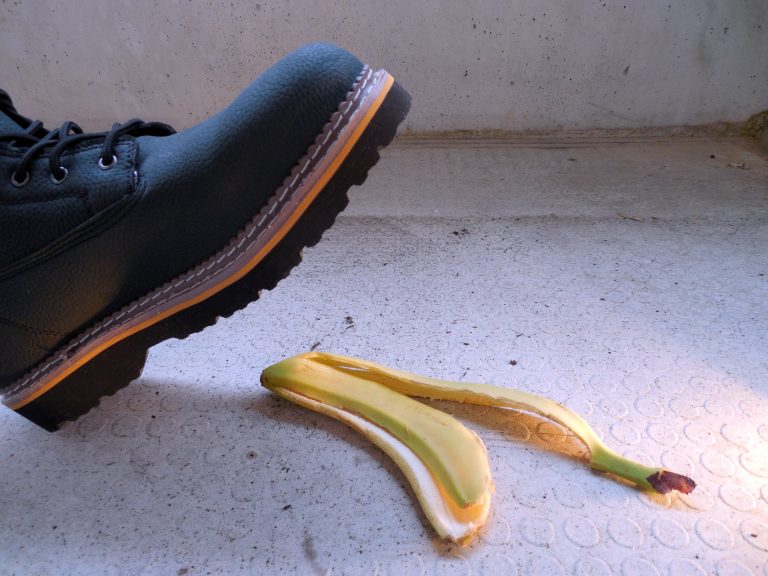Slips, Trips and Falls

In fact, winter season slip and fall claims doubled over the previous year, to account for 29 percent of all workers’ comp claims.
So, to help avoid injury when walking on ice and snow, here are some simple tips:
- Take the safest route to your destination, and make the time for it. Try to avoid slippery surfaces, don’t rush, and use handrails along the way, if possible.
- Don’t use your smartphone while walking—it’s distracting.
- Walk deliberately. Bending your knees a little and taking slow, short steps, increases traction and lowers the odds of falling. If you have to walk on slippery surfaces, also remember to keep your center of balance under you.
- Wear boots or other slip-resistant footwear.
- Look out for “black ice.” Dew, fog or water vapor can freeze on cold surfaces and form an extra-thin, nearly invisible layer of ice that can look like a wet spot on the pavement. It often shows up early in the morning, or in areas that are shaded from the sun.
- Use caution when getting in and out of vehicles, and use the vehicle for support.
- When entering a building, remove as much snow and water from your boots as you can, and watch for wet and slippery floors.
- Avoid carrying items. Keep hands empty so arms are free to move for stabilization. If you must carry items, use backpacks if possible.
- When walking on steps, always use the hand railings and plant your feet firmly on each step.
